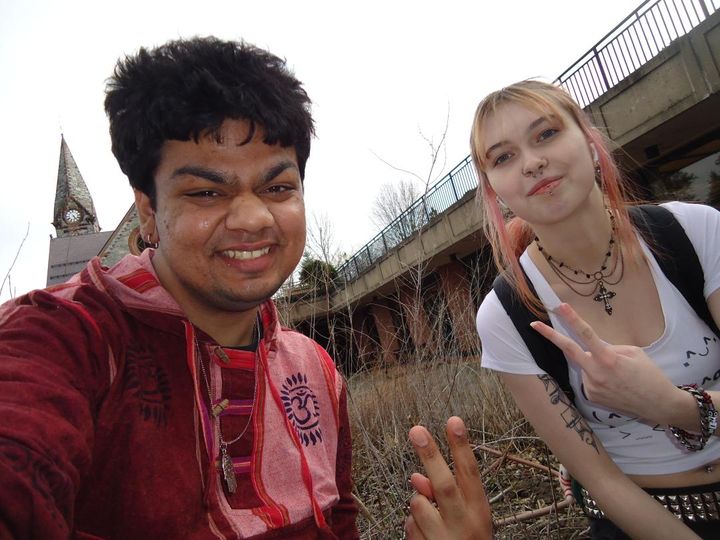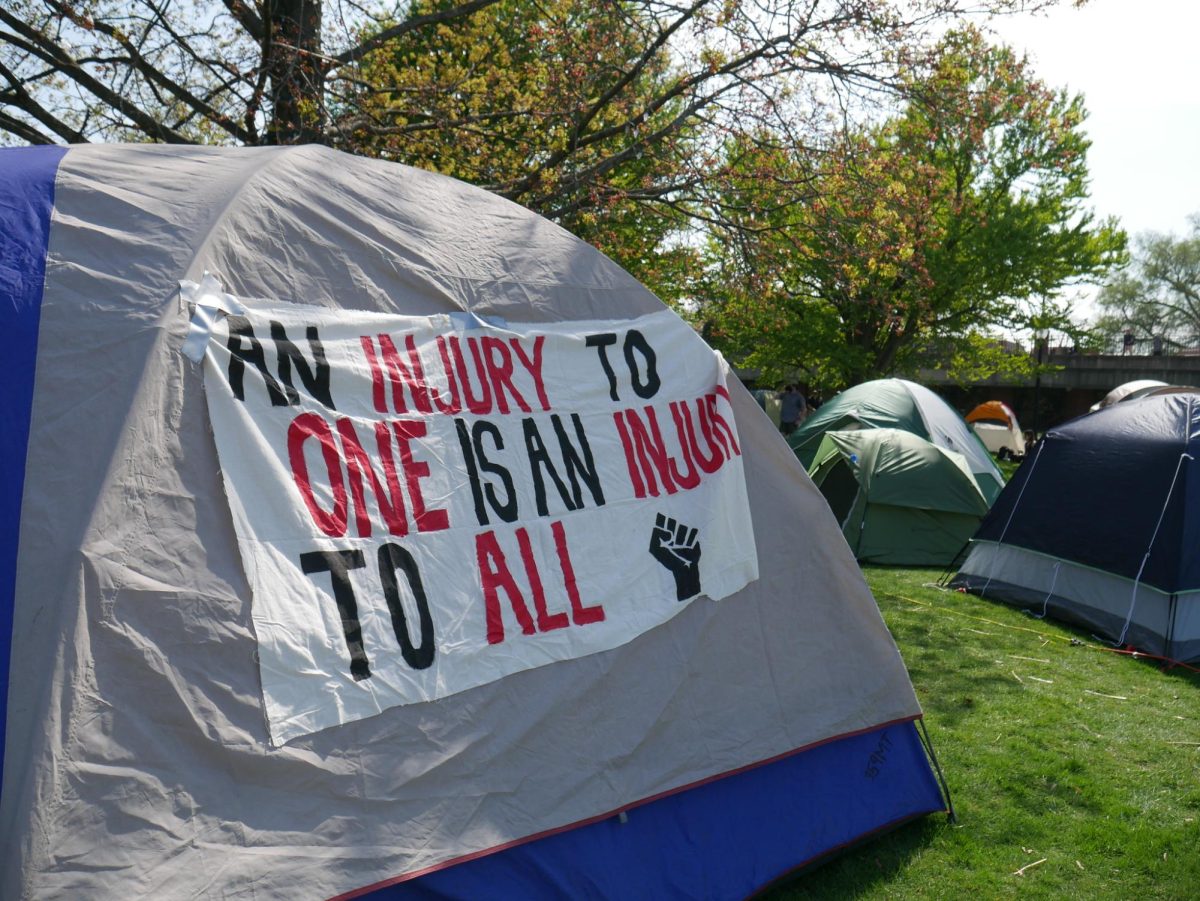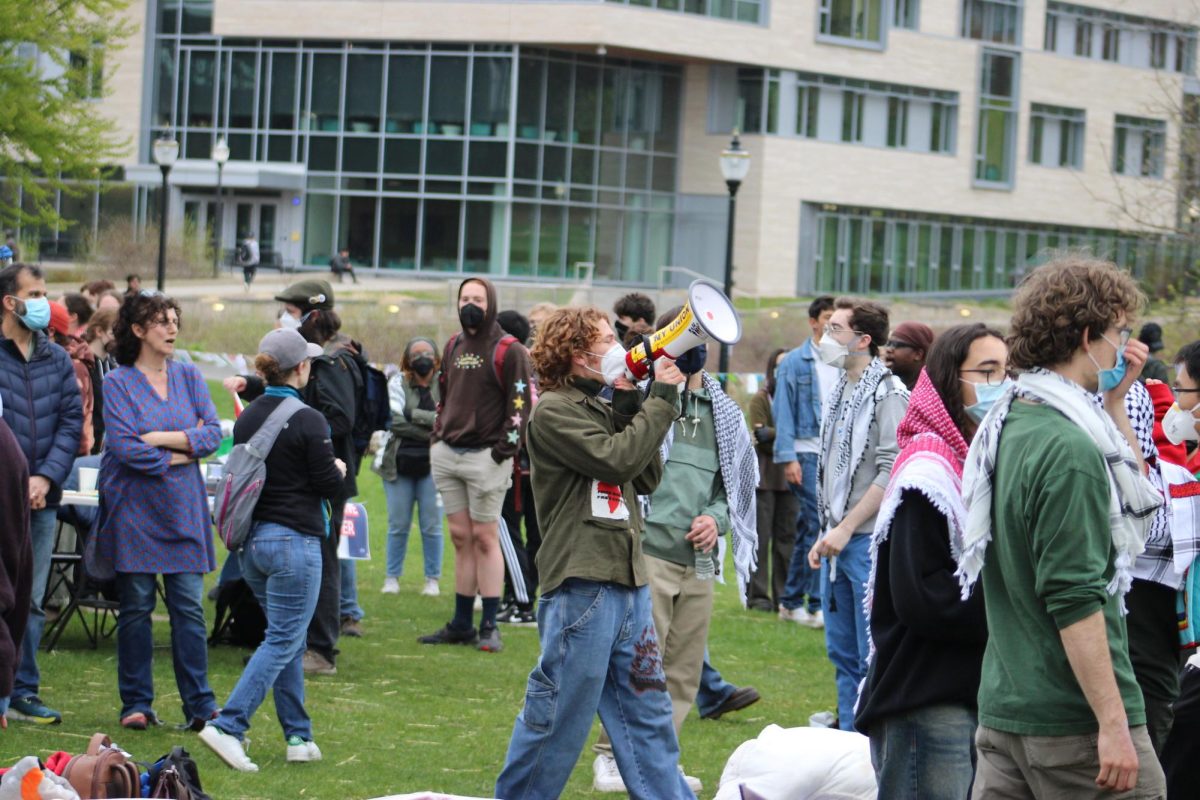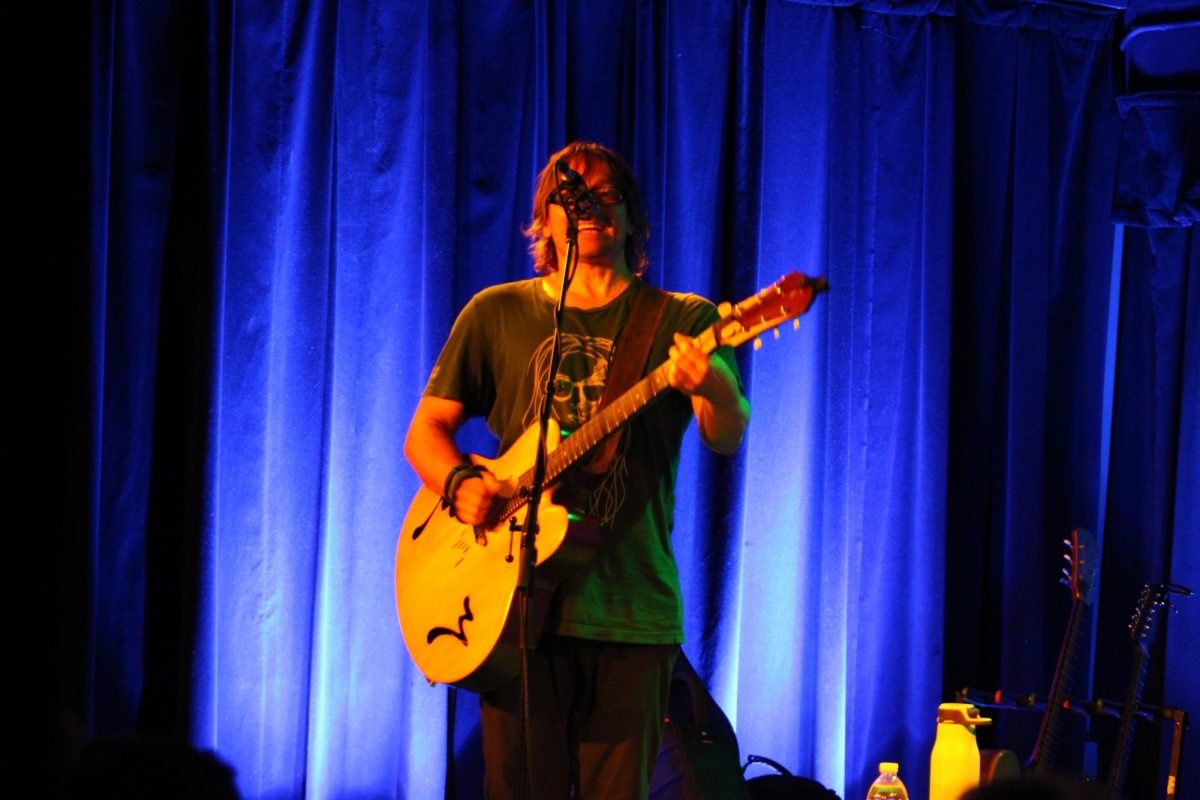The silence was deafening as the 20 of us American University in Cairo students refrained from making a single sound for one minute in the middle of the White Desert, part of the Western Desert in Egypt. Not a noise was heard as we stood surrounded by endless sand and magnificent geological creations, civilization merely a distant memory in our minds.
The Black and White Deserts, which we visited this past weekend, are two of the most amazing deserts in the world. Upon arriving here for the first time, one would think that the soft white outline of the landscape represented the aftermath of a light snowfall. However, a closer look reveals that this color provides the coating for unique rock formations scattered throughout the desert.
These configurations, some as high as three-story buildings, resemble camels, chickens, mushrooms and ostriches. We were able to climb to the top of these structures and gaze across vast stretches of the desert in complete silence; a pleasant departure from the incessant bustle of downtown Cairo.
At sunset and sunrise, the white powder covering the formations transforms into orange and pink, creating an incredible spectacle of color contrast. We experienced this change firsthand, as we had slept outside throughout the night on mats provided by our Bedouin hosts. We awoke to the glistening sunshine amidst the backdrop of the white and pink landscape.
The Bedouins (nomadic Arabs) who guided us throughout our journey acted as though we had been friends for years. My driver sped our Jeep around the desert, identifying famous sites, all the while racing other vehicles and driving upwards of 130 miles per hour.
The Bedouins joked with us, introduced us to Egyptian music and its unique drum-playing, and cooked us a delectable dinner of chicken, rice and potatoes at night.
This particular night in the White Desert was perhaps my most enjoyable time here so far. Sitting cozily around a campfire, eating with my friends, dancing with Bedouins and observing the eerie white environment is something I will most likely never again experience in my life.
Coupled with our travels to the Crystal Mountain, a huge rock formation composed of quartz crystal, this past weekend was a kind of surreal experience only Egyptians and tourists can comprehend.
In addition, the trip presented us with an opportunity to drive through an authentic local Egyptian town far away from Cairo. It was absent of any cute tourist concoctions frequently seen throughout the streets of the capital.
The environment resembled that of a Third World country, with a run-down infrastructure and little indication of a functioning economy. Every woman I saw wore both a hijjab and a niqab (which covers a Muslim woman’s entire face besides her eyes).
Yet a deeper look showed that there were clearly signs of culture similar to more advanced societies. There were schools for young children, local restaurants with chefs, and reliable transportation methods, such as moving food and supplies on donkeys.
These aspects provided fresh evidence that even if different cultures are inhabited by people who don’t look like us, the same desires – education, a healthy diet and efficient economization of resources – are universally applied in any successful civilization, regardless of the blood of its residents.
This town offered no mesmerizing tourist sites, but the memories of these otherwise mundane occurrences – little children bolting out of class into the streets, a chef waiting for locals to drop buy for a bite to eat, and men moving materials on donkeys – will be in my head for the remainder of my time here.
Back in Cairo, Hamas leadership has been talking with Egyptian authorities about a possible cease-fire with Israel. Recently, a Palestinian terrorist opened fire on a West Jerusalem seminary, killing eight innocent students.
As of right now, Hamas has not been directly implicated in coordinating the attack. Reading horrific news stories from the comfort of our homes often distances us from the realities of military conflict. In light of my travels throughout the region, Middle Eastern violence has taken on a new meaning for me.
For instance, I received an e-mail recently from an Israeli friend whom I had met on a trip there. She explained how a close friend of hers had died during the violence near the Gaza-Israeli border. She discussed the current instability and heightened tension in Jerusalem, where her family lives.
Another Israeli friend, with whom I roomed for a few nights in Israeli hotels, told me how buildings right next to where he lived were bombed. A Palestinian friend in one of my AUC classes has family living on the Gaza Strip. Personally, I shudder at the fact that I walked within the vicinity of the recently attacked seminary in West Jerusalem in January.
It is easy to hold an apathetic attitude in reaction to news events far removed from the luxuries of our own homes. But never forget that the actions of a few – in this case, primarily Palestinian terrorists – can cost the lives of many. Tragically, my Israeli and Palestinian friends know this truism all too well.
Greg Collins is a Collegian columnist. He can be reached at [email protected].






